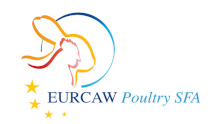Document type: scientific article published in Frontiers in Veterinary Science
Authors: Stephanie Janet Schneidewind, Susann Langforth, Diana Meemken
Preview: This study investigated the occurrence of various animal welfare violations at German abattoirs by analyzing the results of an anonymous online survey and relevant German court decisions. The survey targeted official veterinarians (OVs) and other individuals responsible for enforcing animal welfare laws and regulations at German abattoirs. Participants were asked to report the five most common animal welfare violations in their workplaces during the past 3 years (2019–2021), and whether 22 specific given violations had occurred or not (in the same timeframe). The court decisions were examined to determine how many abattoirs were penalized for a specific animal welfare violation and the details about the number and species of affected animals. Overall, the violations examined throughout this study fell into one of the following categories: (1) use of prohibited driving aids (e.g., illicit use of electric prods, or hitting/beating animals); (2) inadequate husbandry in lairage; (3) inappropriate handling of animals with special care needs; (4) improper restraint, stunning, and bleeding of animals; and (5) unqualified task execution/inadequate administrative work (e.g., documentation of a violation). The violations analyzed in the scope of this study most frequently fell into categories 1, 2, and 4. Regarding the five violations that survey participants reported to be the most common in the years 2019–2021, 42.6% of responses (N = 277 reported violations) fell into category 4, followed closely by category 1 with 37.9%. Of the 22 violations surveyed in the second part of the survey, those reported by 50.0% or more participants were concentrated in categories 1, 2, and 4. Regarding the 16 relevant court rulings spanning from 2015 to 2022, the most frequently documented instances of misconduct primarily fell into category 1. The collected data suggest that there may be need for improvements regarding compliance with animal welfare legislation, especially concerning categories 1, 2, and 4. The authors suggest OVs to consider these findings when conducting monitoring activities at abattoirs and in the training and education of abattoir personnel.




